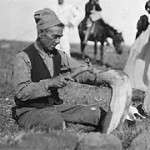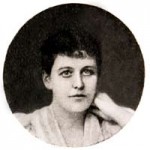An overview of explorers and Rapanui informants who have collected and documented the island culture
Back Story: Archaeological Inventory Project
Easter Island (Rapa Nui) has been the focus of 119 years of archaeological investigation, most of which was accomplished with the involvement of islanders. In 1886, the first archaeological inventory of coastal ceremonial sites was guided by Rapa Nui, assisted by foreigners living on the island at time, and accomplished by Paymaster W.J. Thomson, officers and crew of USS Mohican.
The first real archaeological survey, however, was undertaken in 1913-15 by Katherine Routledge and her husband William Scoresby Routledge, co-leaders of the Mana Expedition to Easter Island. Routledge was assisted by Juan Tepano, her guide and chief collaborator.
Alfred Métraux and Henri Lavachery of the Franco-Belgian expedition, 1934-35, were not archaeologists, but their work in ethnography and rock art recording, respectively, was invaluable. They, too, worked with Juan Tepano, but also with Victoria Rapahango and Isabel Chavez. Father Sebastian Englert, who also arrived in 1935, carried on the tradition of inventory by numbering and describing ceremonial sites and statues. He served as consultant to Thor Heyerdahl’s Norwegian Archaeological Expedition. E.N. Ferdon, Jr., one of Heyerdahl’s collaborators, worked with Juan Tepano’s son Jorge.
[Read More…]
Easter Island’s Ethnographic Triangle:
Katherine Routledge (1866-1935), Alfred Métraux (1906-1963) and Juan Tepano (c.1867-1947)
This is a condensed and edited version of an unpublished paper given in the invited Presidential Session “The Ethnographer’s Discipline: Alfred Métraux (1902-1963) in his Centenary” at the American Anthropological Association’s Centennial Meeting, New Orleans, 2002. It was further edited for and presented at a session of the Pacific Arts Association meeting, Salem, Mass., 2005.
Field Notes, Travel Writing and Professional Ethnography
Field work, and the field notes such work produces, supplies the discipline of anthropology with new ethnographic information. Before ethnography was established as a discipline in the 1840s, the critical and comparative observations of early Pacific voyagers produced rich accounts of Oceanic cultures. “Recent studies of ethnography as a genre bring out the many tropes it shares with unscientific, lay forms such as travel writing.”
Consider the words of Alan Howard, in his foreword to Robert Borofsky’s Making History: “By examining the residues of ethnographic research…we can develop a more sensitive understanding not only of the peoples we study but of our own constructions about them.” This paper examines the “residues” of research produced by two early investigators who were powerful personalities on Easter Island (Rapa Nui): Katherine Pease Routledge and Alfred Métraux. [Read More…]
 English
English  Español
Español 
